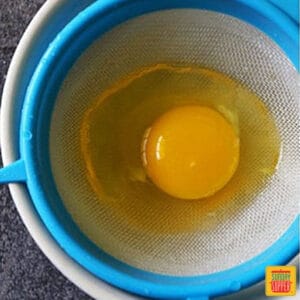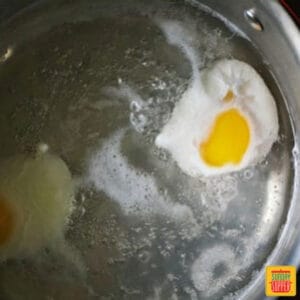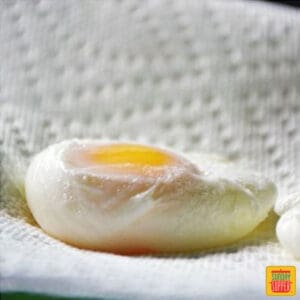
How to Poach an Egg
Cook perfect poached eggs every time! Follow our guide on how to poach an egg, and you'll be poaching eggs like a pro in no time.
Servings 1 egg
Calories 63kcal
Equipment
- Fine mesh sieve
- Deep saucepan
Ingredients
- 1 egg or however many you want to poach
- 4 inches water fill saucepan 3-4 inches deep with water
Instructions
- Line a plate with a paper towel – you will be resting the eggs here after cooking.Add 3 to 4 inches of water to a deep saucepan. Bring the water to a slow boil over medium heat. Do not be tempted to cook at a higher temperature.While you wait for the water to boil, drain the eggs. Crack an egg into a fine mesh sieve and allow the thin whites to drain out into a bowl. After draining, transfer the egg to a separate bowl and continue draining all eggs.

- When the water reaches a slow boil, gently lower each egg into the water. Do not swirl the water – this is unnecessary thanks to draining the eggs!Make sure the water is maintaining a slow boil, and set a timer for 3 minutes.

- When 3 minutes is up, use a slotted spoon to transfer the eggs to the plate with paper towels. Season with salt and pepper or use with your favorite poached egg recipes, and enjoy!

Notes
- Don't salt the water - this will encourage the egg whites to spread out more, so you won't have a perfectly round egg.
- Crack the eggs into separate bowls before cooking, even if you are not using a sieve to drain them. This will help you avoid getting eggshells in the egg or breaking the yolk. It makes it quick and easy to pour the egg into the boiling water.
- Spoon water on top of the eggs while they're cooking for a perfectly white poached egg all around.
- Deeper pots means rounder eggs. 3 to 4" of water is best for poaching eggs.
- Using white vinegar while cooking the egg isn't necessary, but will help it hold its shape. Add ~1 Tbsp. white vinegar to the water if you want to try it out - it won't make your eggs taste like vinegar.
Nutrition
Calories: 63kcal | Carbohydrates: 1g | Protein: 6g | Fat: 4g | Saturated Fat: 1g | Trans Fat: 1g | Cholesterol: 164mg | Sodium: 63mg | Potassium: 61mg | Sugar: 1g | Vitamin A: 238IU | Calcium: 25mg | Iron: 1mg